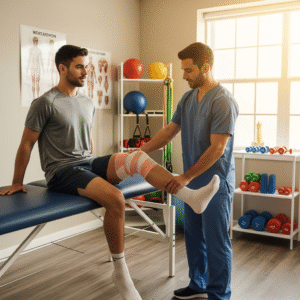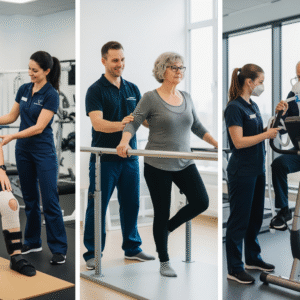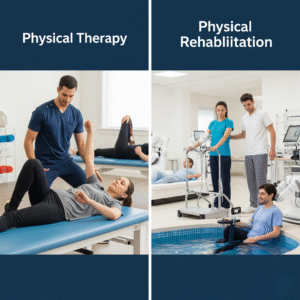Introduction
Knee injuries are among the most common issues faced by athletes and active individuals, often resulting from sports activities or sudden twists and turns. Ligament tears, particularly those involving the PCL, ACL, Meniscus, and LCL, can significantly impact one’s mobility and quality of life. Understanding these injuries and their treatments is crucial for effective recovery and prevention of long-term complications.
Posterior Cruciate Ligament (PCL) Tear:
The PCL is a strong ligament that connects the femur to the tibia, providing stability to the knee joint. A PCL tear typically occurs from a direct blow to the front of the knee or from sudden twisting motions. Symptoms include pain, swelling, and instability in the knee.
Treatment for PCL tears depends on the severity of the injury. In mild cases, rest, ice, and physical therapy can help strengthen the surrounding muscles and improve stability. Severe tears may require surgical reconstruction to restore stability and function to the knee.
Anterior Cruciate Ligament (ACL) Tear:
The ACL is a crucial ligament that stabilizes the knee joint, particularly during activities that involve sudden stops or changes in direction. ACL tears are common in athletes, especially in sports like soccer, basketball, and football. Symptoms include a popping sensation at the time of injury, swelling, and instability.
Treatment for ACL tears often involves surgical reconstruction followed by a comprehensive rehabilitation program. Physical therapy focuses on strengthening the muscles around the knee and improving flexibility to enhance joint stability and reduce the risk of future injuries.
Meniscus Tear (MCL) Tear :
The meniscus is a C-shaped cartilage in the knee that acts as a shock absorber between the thighbone and shinbone. A meniscus tear can occur from twisting or rotating the knee forcefully. Symptoms include swelling, stiffness, and pain, especially when twisting or squatting.
Treatment for a meniscus tear depends on the location, size, and severity of the tear. In some cases, rest, ice, and physical therapy may be sufficient to relieve symptoms. However, large or complex tears may require surgical repair or removal of the damaged tissue to restore knee function.
Lateral Collateral Ligament (LCL) Tear:
The LCL is located on the outer side of the knee and provides stability to the joint against outward stress. LCL tears are less common than other knee ligament injuries but can occur from a direct blow to the inner knee or from sudden twisting motions. Symptoms include pain, swelling, and instability in the knee.
Treatment for an LCL tear depends on the severity of the injury. In mild cases, conservative measures such as rest, ice, and physical therapy can help. Severe tears may require surgical repair to restore stability and function to the knee.
Conclusion:
In conclusion, knee ligament injuries, including PCL, ACL, Meniscus, and LCL tears, can be debilitating, but with proper diagnosis and treatment, most individuals can regain full function and return to their normal activities. If you suspect you have a knee ligament injury, it is essential to seek medical attention promptly to prevent further damage and ensure a speedy recovery. Physical therapy plays a crucial role in the rehabilitation process, helping individuals regain strength, flexibility, and function in the knee joint.
If you’re in the Fort Lauderdale area and need expert care for knee injuries or any other musculoskeletal issues, Theracave offers science-based treatments and personalized care to help you get back to doing what you love. Contact us today to schedule a consultation.







